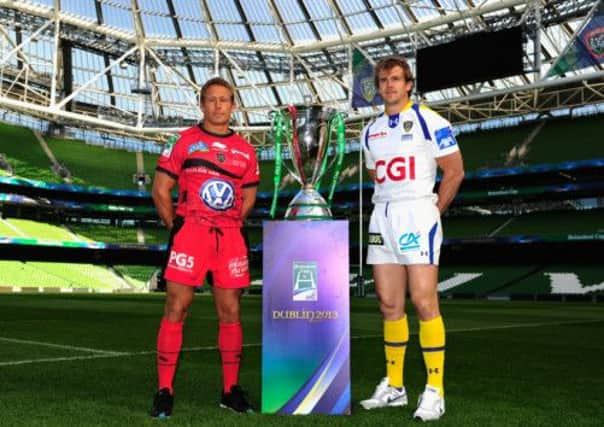Heineken Cup underlines foreign players’ value


Paradoxically, however, the opinion commonly expressed when the game went professional, that players would suffer burn-out, and their careers would be shorter, seems to have been disproved. David also had an article on Nathan Hines, He is 36-years-old, and not only going strong, but lining up for Clermont-Auvergne against Toulon in this afternoon’s Heineken Cup final.
Moreover, Hines won’t be by any means the only player on the field to have passed, or be at least approaching, the half-way mark of what the Bible told us was our allotted span. The Toulon hooker, Sebastian Bruno, is 38. Yesterday, too, Brian O’Driscoll, aged 34, signed up for another season with Leinster, even though he has taken more than his fair share of knocks.
Advertisement
Hide AdAdvertisement
Hide AdThe Heineken final is always something to look forward too. Some are doubtless a bit disappointed that there is no international interest in this one, though it might be said in reply that the composition of the two teams is international enough. Indeed, when the teams take the field, Frenchmen will be in the minority. I daresay many in France will be backing Clermont because, despite having Welsh, Scottish, New Zealand, Australian, Canadian, Fijian and Georgian players, the club has contrived to retain a very powerful sense of its local identity. This is incarnated in the club captain, Aurelien Rougerie, who started playing mini-rugby there 25 years ago. Toulon don’t have perhaps the same sense of local identity; though the club has a great history, it was in the doldrums until revived by its billionaire owner who recruited a team of stars drawn from a’ the airts. I think that very talented young wing, Alexis Palisson, was the only Frenchman who started in the semi-final,
This is the way professional club rugby is going, though, naturally to a lesser extent in countries where clubs are not as rich as the top French ones. The other day, I watched a recording of the 2009 Heineken final in which Leinster came from behind to beat Leicester in a terrific game. Leinster had lots of Irish stars, from O’Driscoll on, but the man who turned the game in their favour was the Australian flanker, Rocky Elsom who, as it happens couldn’t now force his way into Toulon’s semi-final XV.
Many here are wary about the recruitment of players who are not qualified for Scotland, understandably since we have only two pro teams. Yet it is unlikely that Glasgow would have come so close to being in the Pro 12 final if they hadn’t signed Niko Matawalu. Henry Pyrgos has played very well at scrum-half, winning his first Scottish caps, and a deserved place in the national squad that will play a tournament in South Africa next month, but he often had to give way to Matawalu, and there were at least half a dozen matches in which the Fijian’s flair and speed made the difference between victory and defeat, or ensured that victory came with a bonus point. The South African Josh Strauss also played an important part in Glasgow’s successful season. Moreover, though we may have only two clubs, there is now at least a full set of Scottish internationals playing their rugby elsewhere. That includes six who started in the pack in this year’s Six Nations: Euan Murray, Richie Gray, Jim Hamilton, Kelly Brown, Alasdair Strokosch and Johnnie Beattie. So we shouldn’t worry too much about having a few players in our pro teams who are not, and will never be, qualified for Scotland. Indeed, it is obvious that Edinburgh need to sign a couple of ones who, like Matawalu and Strauss – or Rocky Elsom in that 2009 Leinster team – can make a significant difference.
The other sad news of this week was the announcement of Joe Ansbro’s enforced retirement from the game as a result of the broken neck he suffered last autumn. He had a rare talent and is a sad loss. Nobody can pretend that rugby has been anything but a dangerous game, as any physical contact sport must be. There’s nothing new in this. K G Macleod, the outstanding Scottish back of the Edwardian era, retired at the age of 21, not, as it happens, because of any injury to himself, but at his father’s request, after the young man’s elder brother had been badly injured.
That, of course, was long before the game became as physical as it is now. One should recognise, too, that rugby is not unique in the damage it can do. The dangers of boxing are obvious. Some footballers suffer long-term brain damage from frequent heading of the ball – stopping hard shots with the head is not good for the health. And, compared to steeplechase jockeys, few of whom go through a career without breaking more bones than some of us realise we have, rugby players engage in a safe pursuit.